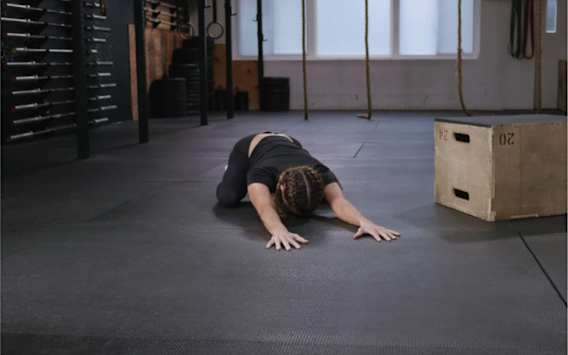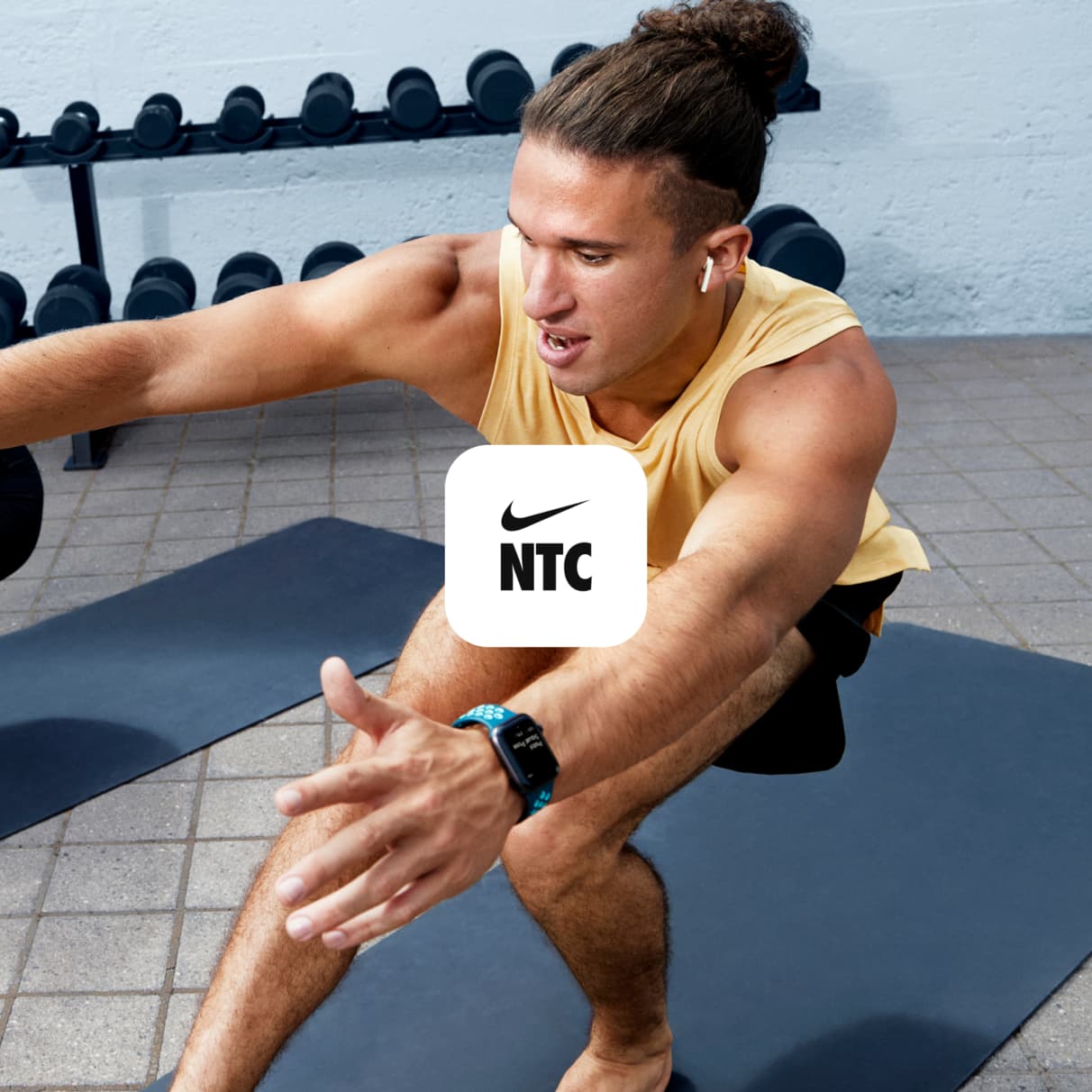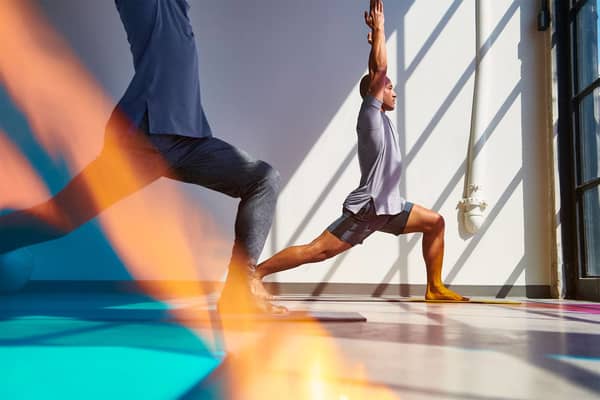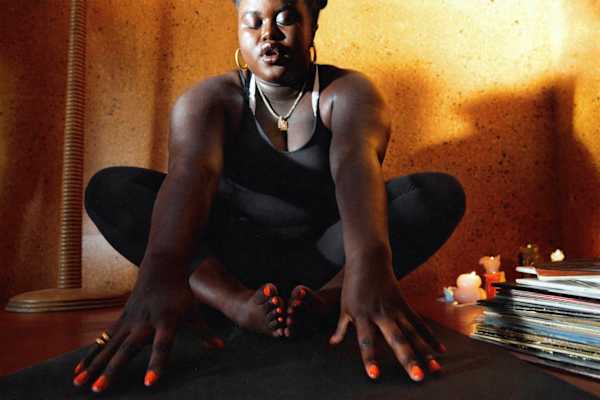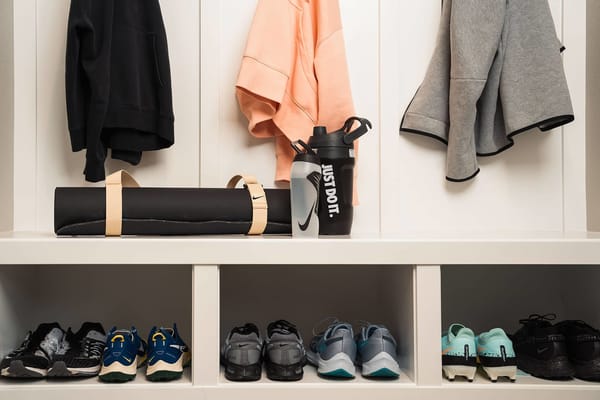9 Yoga Poses for a Dose of Stress Relief
Sports & Activity
When anxiety starts to creep in, you can combat it with a little bit of yoga for stress relief. Find a quiet place, breathe deeply and try these 9 poses.

Stress is a part of life, but the amount of stress and anxiety in our lives seems to have steadily increased. And that often comes with symptoms like tense muscles, low energy, headaches, depression, and lack of focus. None of which are conducive to feeling and performing your best.
There are plenty of ways to relieve stress — meditation, eating better, exercise, and getting lots of rest to name a few. Yoga, in particular, can help reduce stress and physical pain, according to a 2007 study in the International Journal of Yoga.
Core Components of Yoga
Hatha yoga, for example, is one of the most common styles of yoga and is a good way for beginner yogis to reduce stress because of its slower pace and gentler movements. The core components of Hatha yoga (and yoga in general) include:
- Poses (Asanas): These are the movements that range from simple to difficult, taking into account balance, strength and stretching.
- Breathing (Pranayama): As you move through different postures, your inhale and exhale should match your movements, which helps calm your body and quiet your mind so you can focus on the present. Focusing on breathing through your nose facilitates relaxation and can help reduce anxiety.
- Meditation (Dhyana): Many yoga classes start and end with sitting or lying on the floor in complete silence. This helps train your body and mind to be in the moment, so you can fully soak up your practice.
Practicing yoga breathing and poses is not only a great stress reliever but is also effective in releasing physical tension. In order to help you better understand what poses are helpful for reducing stress, here’s a list.
These movements are simple and restorative, and you don’t need to be a master yogi to do them. Each posture has its unique health benefits, including relieving headaches and insomnia and restoring your nervous and lymphatic system.

Best Yoga Poses for Stress
1.Child’s Pose (Balasana)
Child’s pose stretches your hips, thighs, and ankles and helps to relieve back or neck pain. It’s a common yoga pose that helps your reset and allows your body to rest after an intense pose or when class is winding down.
- Kneel down and sit back on your heels.
- Slowly bend forward until your forehead meets the ground and your chest touches your thighs. If you need more support, place a cushion or yoga block underneath your tailbone.
- Relax your arms by your side or stretch them out in front of you with your palms facing down.
- Breathe in and out deeply through your nose.
- Hold this pose for a few minutes.
2.Downward Facing Dog Pose (Adho Mukha Svanasana)
This posture is one of the most common in yoga. Downward facing dog is an effective way to stretch the entire body and improve circulation.
- Start on all fours on your yoga mat with your knees off the floor. Place your hands shoulder width apart and your feet hip width apart.
- Press your fingertips down and pull your forearms forward while keeping your hands flat.
- Rotate your biceps forward and spread your fingers wide, while rolling your arms toward the front.
- Take a deep breath and pull your toes forward, stretching your back but keeping it as straight as you can.
- Relax your neck and let your head hang loosely without flexing the muscles.
- Rotate your shoulder blades a few times. Inhale while tucking your feet under and exhale while pushing your hips upward.
- Hold this pose for at least a minute.
3.Seated Forward Fold (Paschimottanasana)
Seated forward fold is a very common yoga pose, as it helps stretch your spine, lower back, and hamstrings. It’s a great counter-pose for heart openers — movements that involve bending your back, like cobra or camel pose.
Practicing seated forward folds may help improve digestion and ease symptoms of PMS and menopause.
- Sit on the floor with your feet extended in front of you.
- On an exhale, tuck your chin and make sure your back is straight as you slowly bend forward so your head moves toward your knees or shins.
- If you can, use your hands to grab the bottoms of your feet or tops of your shins.
- Hold this position for a minimum of 10 seconds, then slowly rise.
- Repeat this move as many times as necessary.
4.Standing Forward Bend (Uttanasana)
This pose is exactly like seated forward bend, except you’re standing, which helps further stretch your hamstrings.
- Stand with your feet either touching or close together.
- Slowly bend forward until your hands touch the floor (or as far as you can comfortably go).
- Breathe out and if you can, keep your knees straight without locking them.
- If your palms don’t touch the floor, use a yoga block or bend your knees as needed.
- Hold this position for a minimum of 10 seconds or a few breaths, then slowly rise.
5.Half Shoulder Stand (Sarvangasana)
This pose helps improve your body’s circulation, since your legs are raised above your heart, as well as sleep and mood.
One simple variation of this pose uses a wall or pillows to help support you. This is called the "legs-up-the-wall" pose or Viparita Karani.
- Lie on your back with your butt close to a wall.
- Move your legs up the wall, so they’re parallel with the wall, and make sure your knees are straight but not locked.
- Your spine should be straight and completely touching the floor. If this is painful, move your hips further away from the wall or bend your knees slightly.
- Your arms can be next to your body and you may choose to close your eyes.
- Remember to breathe in and out through your nose.
- Hold the pose for a minimum of one minute.
6.Easy Pose (Sukhasana)
Easy pose is simply sitting on the floor with your legs crossed. Think back to when you were a kid and sat on the floor while the teacher read books to the class.
- Sit on your yoga mat with your back straight and legs extended directly in front of you.
- Bend your knees and position your left foot under your right (or whichever leg is more comfortable for your spine).
- Make sure your back is straight and your head and neck are in line.
- Hold this pose for a minimum of one minute, then switch legs.
Note: If you have knee, hip, or back issues, you may choose to skip this pose.
7.Corpse Pose (Savasana)
Savasana is usually reserved for the last few minutes of a yoga class to calm your mind, cool your body down, and allow you to completely let go of any tension. Like the other stress-relieving poses, it’s meant to be restorative and relaxing.
- Lie on your back and move your feet so they’re about as wide as your yoga mat.
- Completely relax so your feet and toes face outward and your arms are by your sides with palms facing up.
- Make sure you’re lying straight, so your head, neck, and shoulders align with your spine.
- Breathe deeply in and out through your nose, clear your mind, and stay in this pose for a minimum of five minutes.
8.Happy Baby Pose (Ananda Balasana)
Happy baby is a pose that’s meant to stretch your back, hips and inner thighs and can help reduce fatigue. Like savasana, it’s another yoga pose that’s commonly practiced in the last few minutes of class.
- Start by lying flat on your back with your legs extended to the ceiling.
- Bend your knees towards your torso and use your hands to grab for the outside of your feet. However, if you notice your lower back or tailbone start to lift from the floor, push it back down. Your entire spine should be touching the floor for this pose.
- If it feels good, gently rock from side to side to give your hips and lower back more of a stretch.
- Breathe slowly in and out through your nose and hold this position for a minimum of one minute.
9.Cat-Cow (Chakravakasana)
The cat-cow pose combination is meant to stretch your spine while you slowly breathe in and out. It involves flexing the spine and is usually a part of a yoga warm-up or relaxation sequence. Because it focuses on the spine, it is great for strengthening the discs in your back to improve circulation and reduce back pain.
- Start in tabletop pose on all fours, hands under shoulders and knees under hips.
- Your neck should be long and neutral — keep your gaze toward the front of your yoga mat.
- Slowly arch your back upward so your spine reaches toward the ceiling. Breathe in.
- Move your head to look up as you drop your belly toward the floor, causing a dip in your back. Breathe out.
- Breathe in and out for several minutes, alternating between the two positions.
Tips for Yoga Meditation for Stress Relief
- Focus on your inhales and exhales. Try to breathe exclusively through your nose.
- Clear your mind of negative thoughts.
- Each time you notice yourself thinking about something else, focus back on your breath and be in the moment.
- Be aware of how your body feels in each pose — how does stretching your right leg feel compared to the left?
In addition to these postures, there are other yoga options to help you relax. Yoga nidra, for example, is a type of guided meditation designed to help you sleep by promoting deep relaxation and stress alleviation. Download the Nike Training Club app for detailed yoga guidance and meditation tips.
To effectively manage stress off the mat, examine your lifestyle to see where you can make small changes. This may mean setting an alarm on your phone to remind you to take short stretching breaks throughout the day, eating more whole foods and making sure you sleep a minimum of seven hours a night.
